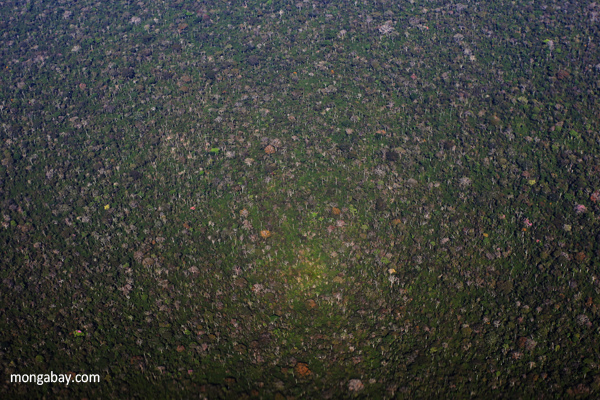
Rainforest in Peru. Photo by Rhett A. Butler.
A new online tool allows anyone to check U.S. government financial pledges made toward reducing emissions from deforestation and forest degradation (REDD+) programs in developing countries.
The US REDD Finance Database, established by the Tropical Forest Group, contains more than 800 “discrete instances” where U.S. government agencies have pledged funds for REDD or “sustainable forestry.” It includes a library where all the data’s source documents are archived.
“The goal of the database is to improve transparency around US government REDD+ finance and monitor how well the US is meeting its fast start finance REDD+ pledge of $1 billion,” said the Tropical Forest Group in a statement.
“The US REDD Finance Database allows American taxpayers and the international community to see for themselves how America helps developing countries conserve their forests and what quantitative impacts on forests are being reported,” added Cara Cummings of the Tropical Forest Group in the press release.
John-O Niles, Director of the Tropical Forest Group, suggested the initiative could serve as a model for REDD finance tracking in other parts of the world.
“The US REDD Finance Database is a model for aligning financial support from a donor with measurable actions in threatened forests worldwide,” he said. “It’s an important tool in this new world of disaggregated climate change governance and cooperation.”
Under the basic premise of REDD, industrialized countries like the U.S. and Germany would compensate tropical nations for reducing deforestation and damaging forestry practices. But the specifics of the mechanism are still hotly debated. Particular sticking points are financing — whether REDD will be financed by public money or market-driven approaches like carbon trading; safeguards to protect biodiversity and the rights of forest-dependent people; and what activities would qualify for compensation. Some environmentalists fear that REDD, without proper design and oversight, could end up financing conversion of primary rainforests for industrial plantations or subsidizing logging that degrades natural ecosystems and carbon stocks, without meaningfully slowing climate change. Increasing transparency around financial flows could prove useful in determining how REDD money is being used and its impact on the ground.
Related articles